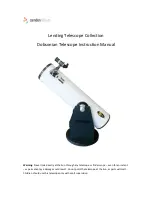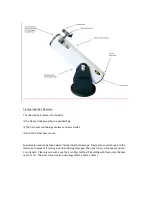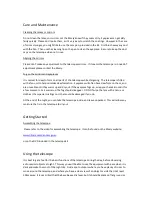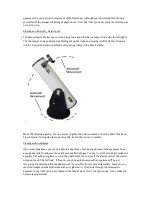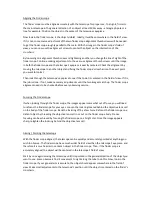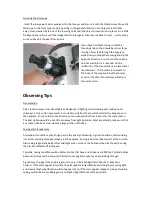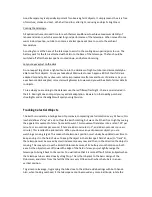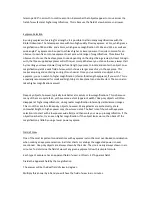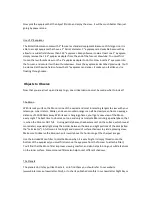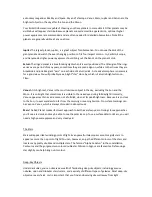
Aligning the Finderscope
The finder scope must be aligned accurately with the telescope for proper use. To align it, first aim
the main telescope in the general direction of an object at least 500m away – a telegraph pole or a
tree for example. Position the object in the center of the telescopes eyepiece.
Now look in the finder scope. Is the object visible? Ideally, it will be somewhere in the field of view.
If it is not, some course adjustment of the two finder scope alignment thumbscrews will be needed
to get the finder scope roughly parallel to the main. With the image in the finder scope’s field of
view, you can now use the alignment screws to center the object on the intersection of the
crosshairs.
By loosening one alignment thumbscrew and tightening another you change the line of sight of the
finder scope. Continue making adjustments to the various alignment thumb screws until the image
in both the finder scope and the telescope’s eyepiece is exactly centered. Check the alignment by
moving the telescope to another object and fixing the finder scope’s crosshairs on the exact point
you want to look at.
Then look through the telescope’s eyepiece to see if that point is centered in the field of view. If it is,
the job is done. If not, make necessary adjustments until the two images match up. The finder scope
alignment needs to be checked before every observing session.
Focusing the Finder scope
If when looking through the finder scope, the images appear somewhat out of focus, you will need
to refocus the finder scope for your eyes. Loosen the lock ring located behind the objective lens cell
on the body of the finder scope. Back the lock ring off by a few turns. Refocus the finder scope on a
distant object by threading the objective lens cell in or out on the finder scope body. Precise
focusing can be achieved by focusing the finder scope on a bright star. Once the image appears
sharp, retighten the lock ring behind the objective lens cell.
Aiming / Pointing the telescope
With the finder scope aligned, the telescope can be quickly and accurately pointed at anything you
wish to observe. The finder scope has a much wider field of view than the telescope’s eyepiece, and
therefore it is much easier to center an object in the finder scope. Then, if the finder scope is
accurately aligned, the object will be centered in the telescope’s field of view.
Start by once again moving the telescope until it is pointed in the general direction of the object you
want to see. Some observers find it convenient to sight along the tube to do this. Now, look in the
finder scope. If your general aim is accurate, the object should appear somewhere in the field of
view. Make small adjustments to the telescope’s position until the object is centered on the finder’s
crosshairs.

